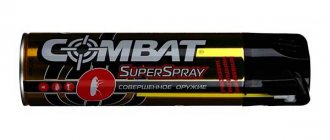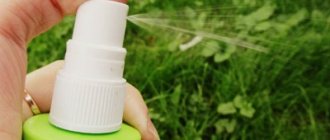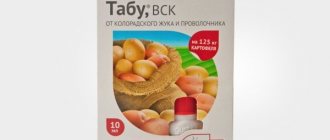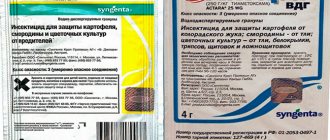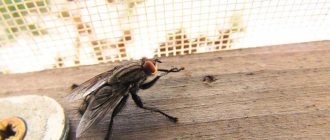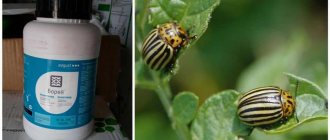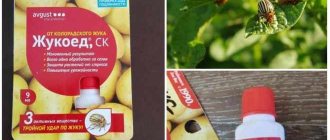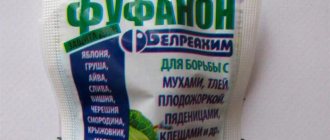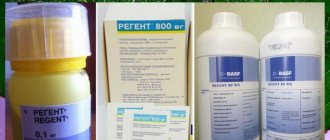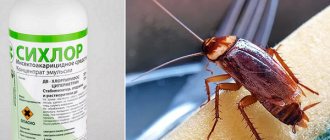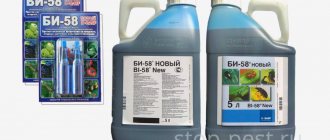Every gardener becomes offended when, after a riot of flowering, a tree is strewn with plum ovaries, and the crop is almost completely lost, falling to the ground, or becomes unusable due to many wormholes.
One of the most damaging garden pests is the plum moth, which is common in gardens across the country.
Description of the pest, prevention and control measures are discussed in the article.
Why is the plum moth dangerous?
A gray butterfly with a brown tint is a plum moth. This is a nocturnal insect, common in the Russian Federation, Siberia, and Europe. It's easy to spot. It leaves holes with brown spots around the fruit. The movements of the caterpillars can be seen inside. The bone is also damaged.
Butterflies are active at night, so they are not easy to see. The danger is a caterpillar that eats the fruit. It hatches in up to 10 days, and leads an active lifestyle for up to 45 days. The harm from the codling moth consists of damage to the vascular system of plums, pears, and peaches, which deprives the fruit of the flow of nutrients. Plums turn purple, their growth slows down, they ripen prematurely and fall off. In young plums, the codling moth eats the pit, and in developing plums, the pulp. The passages are filled with her waste products.
Plum moth
Ticks
Plums are loved by gall plum mites and red fruit mites , both insects are red-brown in color. The first pest forms growths (galls) at the base of the shoots. The insect overwinters in these galls, and in the spring (at a temperature of 15°C) it begins to feed on young plum shoots. During the summer, several generations of ticks hatch.
Fruit mite larvae hatch before plum blossoms and begin to feed on young leaves of the tree. Due to lack of nutrients, the fruits set poorly and soon fall off. In summer, mite eggs are clearly visible on the back of the leaf blade.
Description and biological features
In the more southern regions of the Russian Federation, the codling moth produces three generations during development. To the north there is only one. The lifespan of butterflies is up to 15 days. They have no food. Their second generation has been flying since mid-June. The butterfly has a head up to 1.7 cm, wings with a span of 1.7 cm. The front ones are covered with spots and marks, and the rear ones have a fluffy fringe. The larvae - caterpillars - are distinguished by their scarlet color. The insect lays light green eggs, up to 0.7 mm in size. The 0.8 cm light brown pupa is colored the same as the butterfly.
Cycles
Codling moth on an apple tree: methods of control
The plum moth and measures to combat it are associated with the cyclical periods of its life activity. The larvae remain for the winter, hiding from the cold under the bark. They wait out the season in tree cracks and fallen leaves. The transformation of caterpillars into pupae occurs by mid-May. After 14 days, butterflies form. Up to 40 eggs are laid in the ovary of plums and other garden fruits in the evening. A week later, caterpillars appear and begin to devour the pulp near the seed. The larvae become saturated and crawl away for the winter, hiding in the top layer of soil, under the bark.
The codling moth leaves traces: drops of gum, changes in the color of the fruit. Plums fall from the tree. You need to start taking action as soon as possible. When you see a butterfly, you need to think about the consequences. After all, she will soon have offspring, which will not be so easy to get rid of.
Note! The plum moth at the larval stage also eats pears, apricots, peaches, and cherries.
Spraying timing
The timing of when to spray apple trees against codling moths varies greatly for each region of the Russian Federation and for each spring. Therefore, it makes no sense to indicate them, since they are determined locally by the time the flight of adult butterflies begins in the spring and its intensity.
in spring
Organophosphorus preparations showed the greatest effectiveness during spring treatment. They destroy the caterpillars during their birth and the pest does not have time to “reach” the small apples. The most effective ones will be:
- "Calypso";
- "Admiral";
- "Sirocco";
- "Zolon";
- "Lannat-20L";
- "Pirinex";
- "Chlorpyrifos".
After flowering
During the mass flight of butterflies, the poisons “Insegar”, “Dimilin”, “Herold” are used. These drugs belong to the group of insect growth and development regulators. Females lay eggs on a poisoned surface, so the caterpillars will inevitably die.
Combinations of synthetic poisons are also suitable, for example, Thiamethoxam + Chlorantraniliprole.
During the period of fruit ripening
The use of belts, pheromone traps, biological products and decoctions of herbs poisonous to caterpillars is permitted at the time of ripening of summer and autumn apples.
Carefully! The use of synthetic poisons during this period is prohibited!
Dates in autumn
As soon as the leaves have fallen, you can spray and clean the apple orchard in the fall. They spray the crowns with poison, and scrape the trunks and branches of old bark. You should not do this before these deadlines.
Spraying the garden after the leaves fall.
The first period when to treat apple trees against codling moths is early spring. Before the apple trees themselves begin to bloom.
The treatment period consists of two parts - before flowering and after. It ends when the apples begin to “gain color.”
How often should I spray?
In places where the codling moth forms 2 “waves,” winter apples need 4 sprays, and summer apples two.
In conditions where three generations of codling moth develop, 5 sprayings are recommended for summer and autumn varieties and 7 for winter ones.
Time of processing:
- Quiet cloudy day and complete calm;
- Pre-dawn or sunset hours.
Because in the heat, the preparations reduce their “toxicity”, and the wind will reduce the quality of processing.
Spraying times in regions
In the south of Ukraine, in the Lower Volga region, Rostov region, Stavropol Territory, spraying should begin 12-15 days after the end of flowering. Repeat spraying approximately 11-18 days after the appearance of the first caterpillars in the first carrion.
In the zone of the North Caucasus, the south of the Lower Volga region, in the Krasnodar Territory, the first spraying is carried out 9-11 days after the end of flowering of apple trees; the second - usually 21 days after the first, and the third - when live caterpillars are found in the carrion; the fourth - 14-19 days after the third.
Fighting methods, their comparison
How to treat plums for worms in fruits
The codling moth on plums, methods of combating which are carried out once during the summer, can appear again, and more than once.
Treatment should be done several times, taking into account the approximate time of egg laying:
- From 1 to 16 June. A repeat procedure is done 25 days or a month after the initial one (approximately June 10).
- The largest concentration of caterpillars is the second half of July (from the 18th to August 1). You need to process twice per period.
A number of methods are used to combat the voracious insect. They are used individually and in combination. This is a biological method and chemical preparations. The first is the safest for people and animals, environmentally friendly for the environment. But one should also take into account the need for mechanical methods in agricultural technology, which must be used in the spring and autumn. After harvesting, they dig up the tree trunk circle, and then the falling leaves. Shake the tree so that the affected fruits fall. In the spring, dead bark is removed and burned from trees, since pupae usually overwinter under it; whitewash is used as a remedy.
Codling moth caterpillar
Biological compounds
After applying bio-compositions, by the time the harvest ripens, there are almost no harmful substances in the fruits.
Important! Biological methods of controlling the codling moth are often the only possible ones. This applies to cases where there are children in a private household with impaired immunity or diseases.
The effectiveness of the impact is achieved by observing deadlines that depend on the development cycle of the pest. The amount of precipitation, dew, and the presence of other reagents are also taken into account. These factors may reduce exposure because moisture may wash away biologics. Fitoverm and Iskra-Bio products are used. Plants should be processed in dry weather with no wind. The disadvantage is the fact that the drug is washed off by rain, as a result of which the treatment must be repeated.
Chemicals
When spraying plants with chemicals, you must follow safety rules. Then the method can be considered to have the greatest efficiency compared to others. Processing is carried out quickly and does not require large labor costs. But the disadvantage is the accumulation of reagents in the fruits. If drugs are used incorrectly, this amount of harmful substances doubles.
The following means are used:
- Alatar.
- Decis.
- Fufanon.
- Karbofos.
- Spark Double effect.
- Other substances.
When to spray apple and plum trees against codling moths? Insecticides are applied twice: at the end of flowering, when the ovaries form, and in July, when eliminating the 2nd generation larvae. The first period varies for regions, on average it is set at the beginning of June. The 1st generation of caterpillars is destroyed. At the beginning of August, the residues are treated with biological preparations. This way you can provide protection to fruit crops. The last treatment is carried out more than a month before harvest.
Decis
Important! When fighting the plum moth, it is recommended to simultaneously involve the forces of the entire surrounding area and neighbors. This way the effect will be maximum effective.
When processing, you must use protective equipment. The respiratory system should be especially protected.
Cabbage pests: leaf beetle, cabbage fly
The cabbage fly is a flying insect that in appearance resembles an ordinary fly, but its body size is more compact and is about 5 mm. The fly begins its destructive activities in May, when it begins laying eggs. The laying is carried out directly into the ground, in close proximity to the cabbage seedlings. After about 10 days, the eggs hatch into voracious larvae that feed on tender roots.
It is not difficult to determine whether a plant is affected by cabbage fly. The plant begins to lag in growth and looks lethargic. As the root system deteriorates, symptoms become more obvious. Initially, the lower leaves acquire a lead color, and after a few days the plant dies completely.
The photo shows the cabbage leaf beetle and its larva
If you notice something is wrong, you need to water the beds with Thiophos solution or spray the cabbage with dust. Traditional methods help by watering the soil next to the bushes with vinegar essence at the rate of 1 tablespoon per 10 liters of water. It is quite effective to sprinkle the rows with tobacco dust, mothballs, mustard, and hot pepper.
Cabbage leaf d is a small green bug that itself is not dangerous to the plant. However, it lays eggs, from which larvae hatch and readily eat cabbage. As a result, the farmer notices the appearance of characteristic damage on the leaves, as shown in the photo.
Tobacco dust, ash, slaked lime - these are time-tested substances that can be sprayed on cabbage. It is possible to catch insects using glue traps placed on the garden bed. Using poisons is guaranteed to help get rid of the leaf beetle. The preparations “Karate” and “Aktara” will quickly destroy beetles and their larvae.
Cabbage pests: bugs and cutworms
Cabbage bugs are very prolific pests that feed on plant sap. A characteristic light spot forms at the site of the bite, as can be seen in the photo. Bacteria, viruses and fungi can penetrate through the wound, causing various cabbage diseases.
The photo shows a cabbage bug and a lightened area of the affected leaf.
Cabbage bugs are repelled by naphthalene, which is pre-mixed with sand and scattered between the beds. Spraying the leaves with tobacco, a decoction of potato tops with onion peels are safe but effective methods of control. Chemical preparations “Phosbecid” or “Belofos” will help get rid of insects even during massive attacks.
The moth moth is an insect that reproduces quickly, especially in the southern regions of Russia. The butterfly lays eggs, which it attaches to the bottom of the leaf. Soon voracious larvae emerge, actively feeding on cabbage leaves and gnawing holes in them. The pest is predominantly nocturnal, hiding during the day at the base of the cabbage stem. The use of traditional repellents and poisons allows you to get rid of cutworms on cabbage.
Pictured is a cabbage cutworm and its caterpillar
Caterpillars are a fairly common problem. Among various insects, the ones that most often cause damage to crops are:
- Cabbage white caterpillar. It has a yellow-green color, a body length of up to 6 cm. The caterpillar is generously covered with long hairs and has a good appetite.
- Turnip white. The caterpillar is green in color and eats only the tender flesh, but ignores the veins, leaving the leaf skeleton intact.
- Rapeseed sawfly larvae. They eat leaves, causing significant damage to the plant.
For effective prevention, it is worth inspecting the leaves every few days and mechanically destroying the pest eggs found on them. For chemical control, the drugs “Kemifos”, “Inta-vir”, “Creotsid” are used. Plantings are sprayed with solutions of these poisons. A positive result comes quite quickly.
Cabbage pests and how to deal with them using folk remedies
The photo shows pest eggs attached to the back of a cabbage leaf.
Farmers increasingly prefer to grow vegetables without the use of chemicals and potent products. This is correct, because even if all safety rules are followed, a small amount of hazardous substances still gets into the ground and can penetrate the human body. What folk remedies can be used to control cabbage pests? We invite you to familiarize yourself with the most popular of them, namely:
Video about cabbage pests and methods of controlling them:
Dangerous cabbage pests cause enormous damage to farms every year. Photos of insects and a description of effective methods of combating them will help the vegetable grower quickly recognize dangerous symptoms and destroy them. You can also preserve the harvest using folk methods, which will allow you to harvest cabbage without harmful substances and good for health.
How to do without chemicals
Plum pests
Some gardeners decide to abandon the use of chemicals. Is it possible? Prevention will help reduce the number of plum moths.
To do this, the following measures are taken:
- Dead bark is removed from the trunks. After all, she can stay under it for the winter.
- It is advisable to regularly burn waste on the site, including fallen and spoiled fruit on the ground.
- The larvae are caught with adhesive strips of cardboard or burlap placed at the bottom of the trunk. A special glue is used that does not dry out. This procedure is performed after flowering. The belt is changed as needed.
- Trichogramma (microscopic insects) are used for control. They are released when the codling moth lays eggs, which are then affected.
- Systematically prune shoots affected by the pest.
- They attract birds by making houses.
- During pupation, the soil near the tree is loosened every ten days, which prevents crawling.
- They make pheromone traps with the scents of female moths. Males are captured. One such device is enough for 4 trees.
- Spray with infusions of tansy, tomato or potato tops, chamomile, and burdock, treating with the compounds weekly. This is a folk method.
- Water with ash and soap is also a means of treatment.
All these methods are used in turn. If they don't help, use chemicals. Knowing how to deal with the pest - the codling moth on a plum, apple or cherry tree, the gardener will be able to take action in advance and protect the crop.
5 1 vote
Article rating
Traditional methods
Traditional methods are aimed primarily at preventing the spread of caterpillars, but also help reduce their numbers and the number of adults or eggs. Adhesive belts that you can make yourself or buy in a store. Attach trap belts to the trunk, 20–30 cm from ground level. In the spring, rising from the ground along the tree trunk, the caterpillars stick to the adhesive layer; the summer resident can only collect and destroy them. Periodically, the belts are replaced with new ones. Belts are also effective against other pests at any time.
Who is Wrinkled Sapwood?
This representative is classified as a parasite of stone fruit trees. It is a small black bug, the body length of which does not exceed 5 mm. The sapwood overwinters in the deep layers of the tree shell. In early spring and before the summer season, the larvae are actively transforming. In mid-May they turn into beetles, which prefer to feed on different parts of the fruit tree.
They gnaw numerous depressions in the area of the trunk and branches. Wrinkled sapwood most often chooses damaged plants. Experienced gardeners recommend promptly removing damaged branches and burning them in a fire. Thanks to this, it is possible to get rid of numerous offspring of the beetle.
